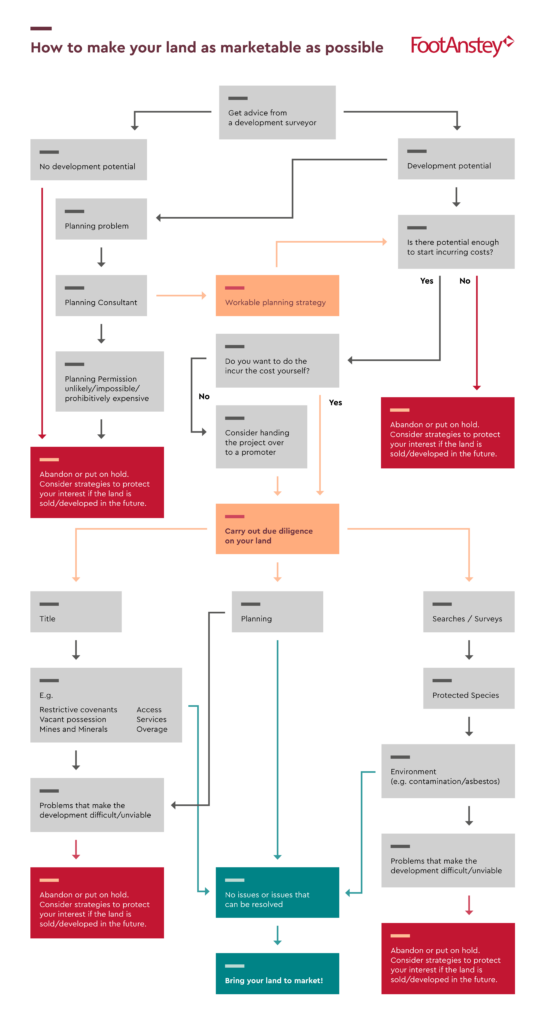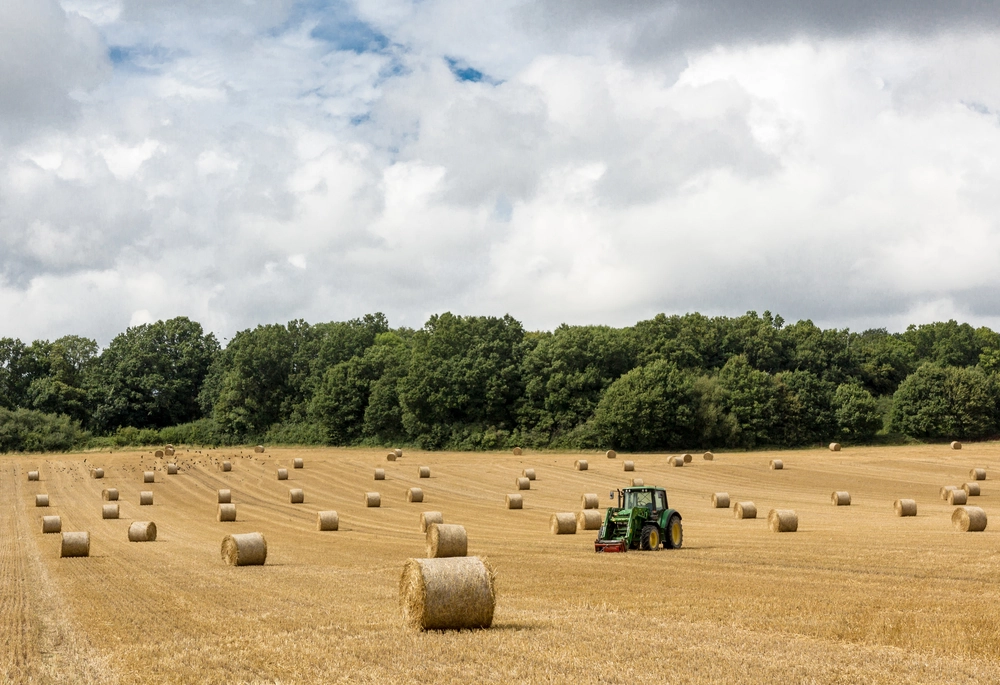
A landowner’s perspective: how to make your land as marketable as possible for development

By Edward Venmore, Becki Biscoe
27 Jul 2022 | 5 minute read
The principle of caveat emptor – meaning "buyer beware" – is well known in the property world. Essentially, this common law principle means that a purchaser takes land as it comes, subject to whatever rights burden it.
If you are selling land, it can therefore be tempting to sit back and let potential purchasers conduct their own investigations into issues affecting the property. However, by proactively investigating title before marketing your property, you can identify any risks or issues and take steps to mitigate or resolve them, making your land much more attractive (and valuable) to potential buyers.
We have set out at the end of this article a flowchart showing what steps you can take as a landowner to make your land as marketable as possible and discuss the five key steps in more detail below.
1. Identifying development potential
The first step is to identify what development potential your land has. In some cases, this may be obvious, but even if it is, unless you are experienced in property developer it may be wise to take advice from a development surveyor. A development surveyor's role is to critically assess a property's development potential, advise on the potential value uplift and identify what issues will need to be worked through in order to achieve that development.
2. Consider a planning strategy
It is highly likely that a development surveyor will advise you to market your land with planning permission already in place. This almost always makes land more attractive (and valuable) to potential buyers. Again, unless you are an experienced property developer, it may be valuable to seek input from a planning consultant at this stage. A planning consultant's role is to advise on planning and regulatory (e.g. environmental) issues, determine whether it would be viable to make a planning application, and if so, develop a strategy for applying for planning permission in the most efficient and cost-effective way.
3. Involving a promoter
Once you have considered planning strategy, you may wish to engage a promoter to take the process on from here. A promoter will essentially run the marketing process from this point right up to agreeing a sale of the land, including making the planning application, liaising with the local authority to obtain permission, carrying out the due diligence process, marketing the property for sale and negotiating with potential purchasers. The question of whether or not to involve a promoter really comes down to how hands on you want to be in the process and whether tapping into a promoter's expertise in carrying out risky and time-consuming processes like obtaining planning permission and appropriately marketing the property outweighs the promoter's fees (which are often based on a percentage cut of the sale).
4. Carrying out due diligence and applying for planning permission
The next step is to implement your development strategy (either directly or through your promoter) by carrying out due diligence to identify any issues with the property and by applying for planning permission. The key aspects of this exercise are as follows:
- Planning – This will involve submitting a planning application to the local authority and liaising with them to secure planning permission.
- Due diligence: title – This will involve a review of your legal title to the property to identify any issues which may restrict or interfere with development. Common issues include:
- Restrictive covenants – These are obligations that limit the way in which the property can be used (for example, a covenant not to build or to maintain an existing structure). Options for resolving these may include obtaining indemnity insurance, negotiating a release with the beneficiary of the obligation or applying to get the covenant modified or discharged.
- Access – Access to the property directly from a public highway or via a clear right of way will of course be vital. Thought may therefore need to be given to ensuring that any implied right of way is formalised in a written agreement, or to ensuring that a private road is 'adopted' and becomes a public highway maintainable by the local authority.
- Vacant possession – If any third party has a right to use or access the property (e.g. a tenant or licensee), careful consideration will need to be given to how to ensure that those rights are brought to an end and the land can be sold with vacant possession in good time.
- Mines and minerals – In certain areas, such as Cornwall, properties may be impacted by rights to mines and minerals beneath the surface, particularly if the proposed development involves laying significant foundations. The beneficiaries of these rights may need to be approached for consent.
- Overage – Overage is a contractual mechanism that allows a previous owner of land to benefit from any subsequent increase in the land's value after it is re-sold. If you own land subject to an overage agreement, any onward sale at an increased value could attract an overage charge, although the terms of the overage agreement will need to be carefully scrutinised to analyse whether any charge would indeed apply.
- Due diligence: searches – As well as investigating the legal title to the land, it is also advisable to carry out a number of other standard searches to understand any other factors which may impact on the development potential of the land. For example, environmental searches may reveal that protected species inhabit the land, contamination or water pollution, all of which may have aneffect on development unless remedied. Searches of the local authority's records may reveal tree preservation orders, plans to designate neighbouring land for certain purposes, or historical breaches of planning permission, which will again need to be carefully considered and addressed before the property is marketed for sale.
5. Mitigating or removing barriers to development
Once planning permission has been obtained and due diligence has been carried out, the next step will of course be to remedy any issues with the land and deal with any conditions to the planning permission so that the land can be marketed as being ready for immediate development. Every parcel of land is unique and will come with its own issues, but the key point to remember is to get the right advice to deal with the relevant barriers to development that impact your land – whether that be from a development surveyor, planning consultant, promoter or legal adviser.
Listen to our podcast
Increasing marketability of land has been a recent topic of conversation in our podcast series 'Experts in the Field'. Find out more on our dedicated podcast page or listen to the latest episode which accompanies this article: 'Landowners- exploring development opportunities'.
Flowchart resource















